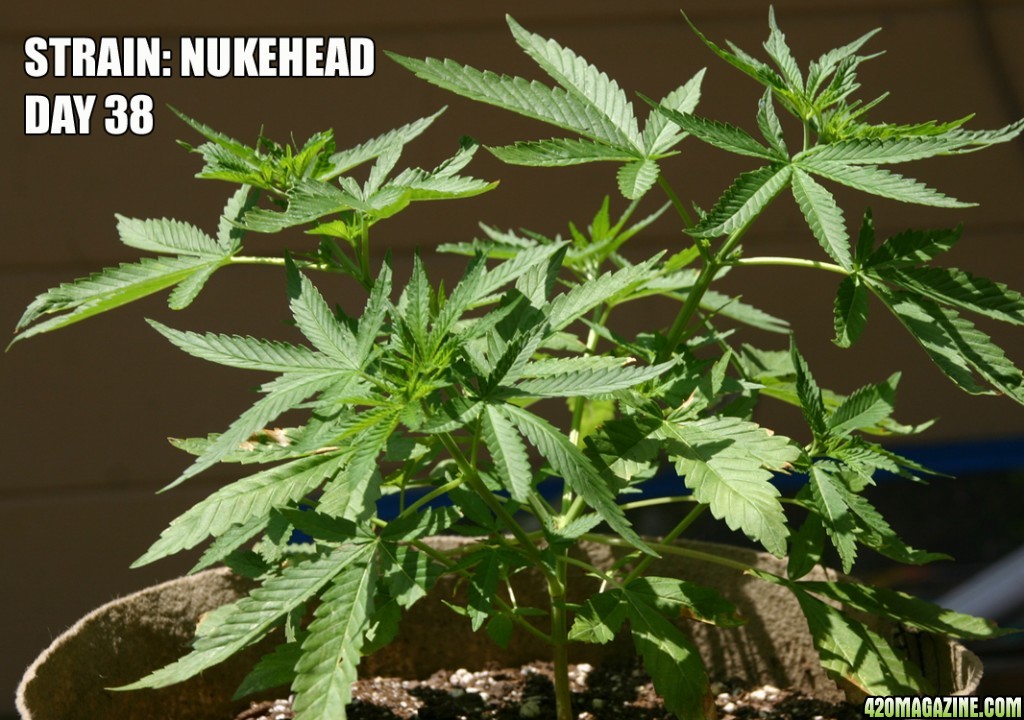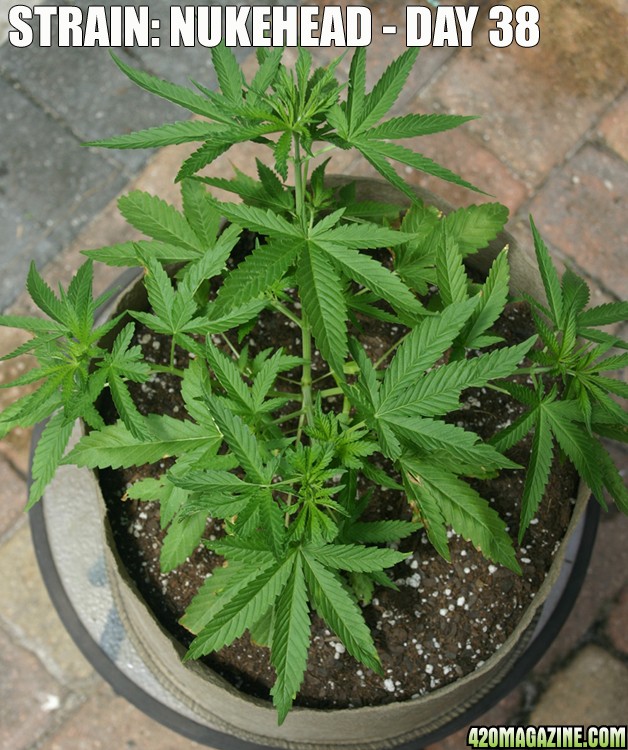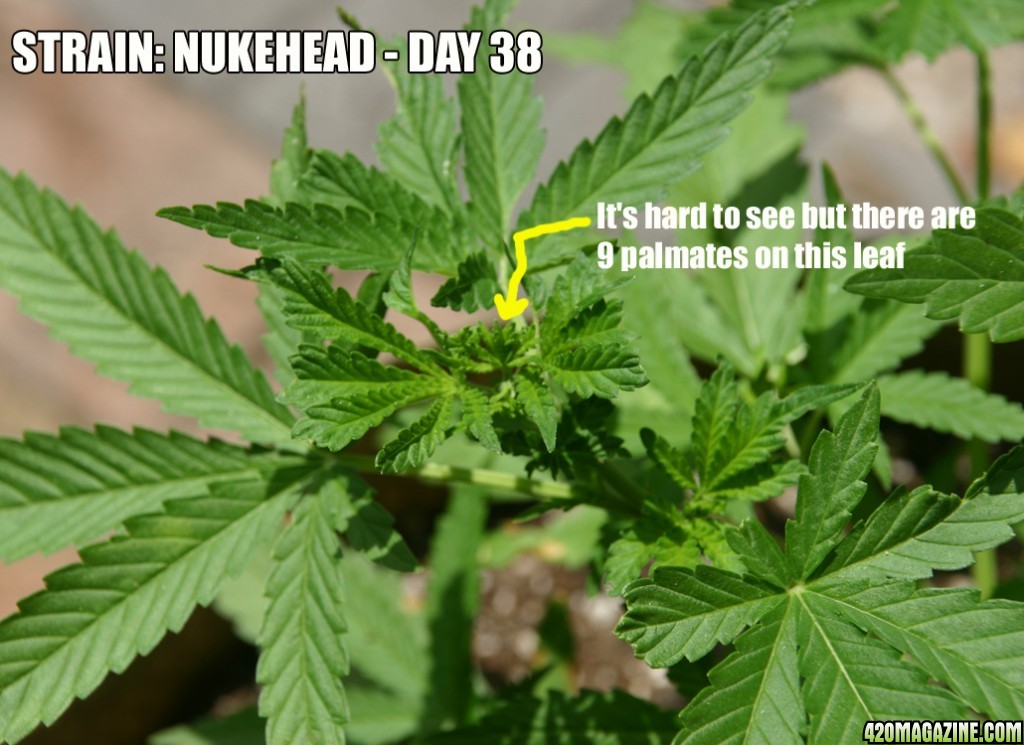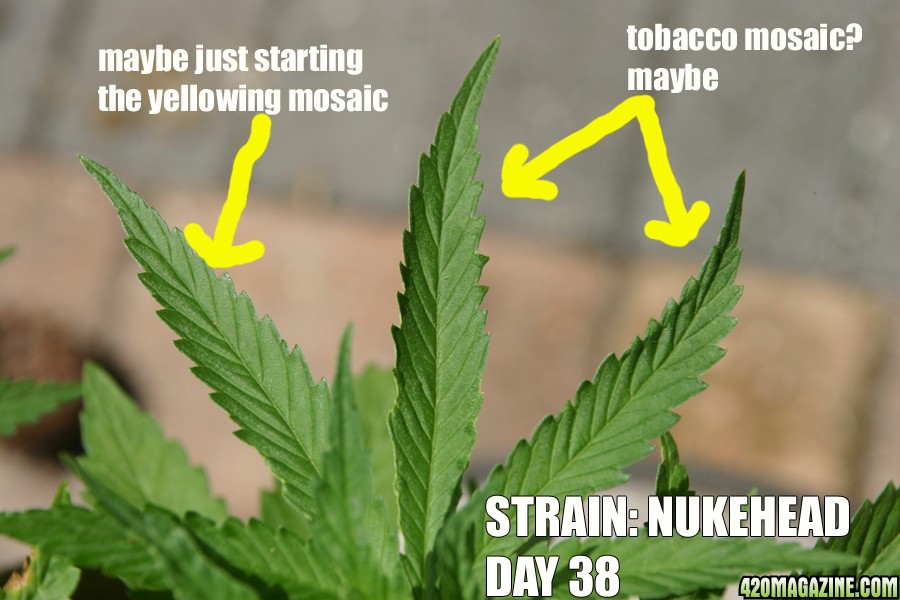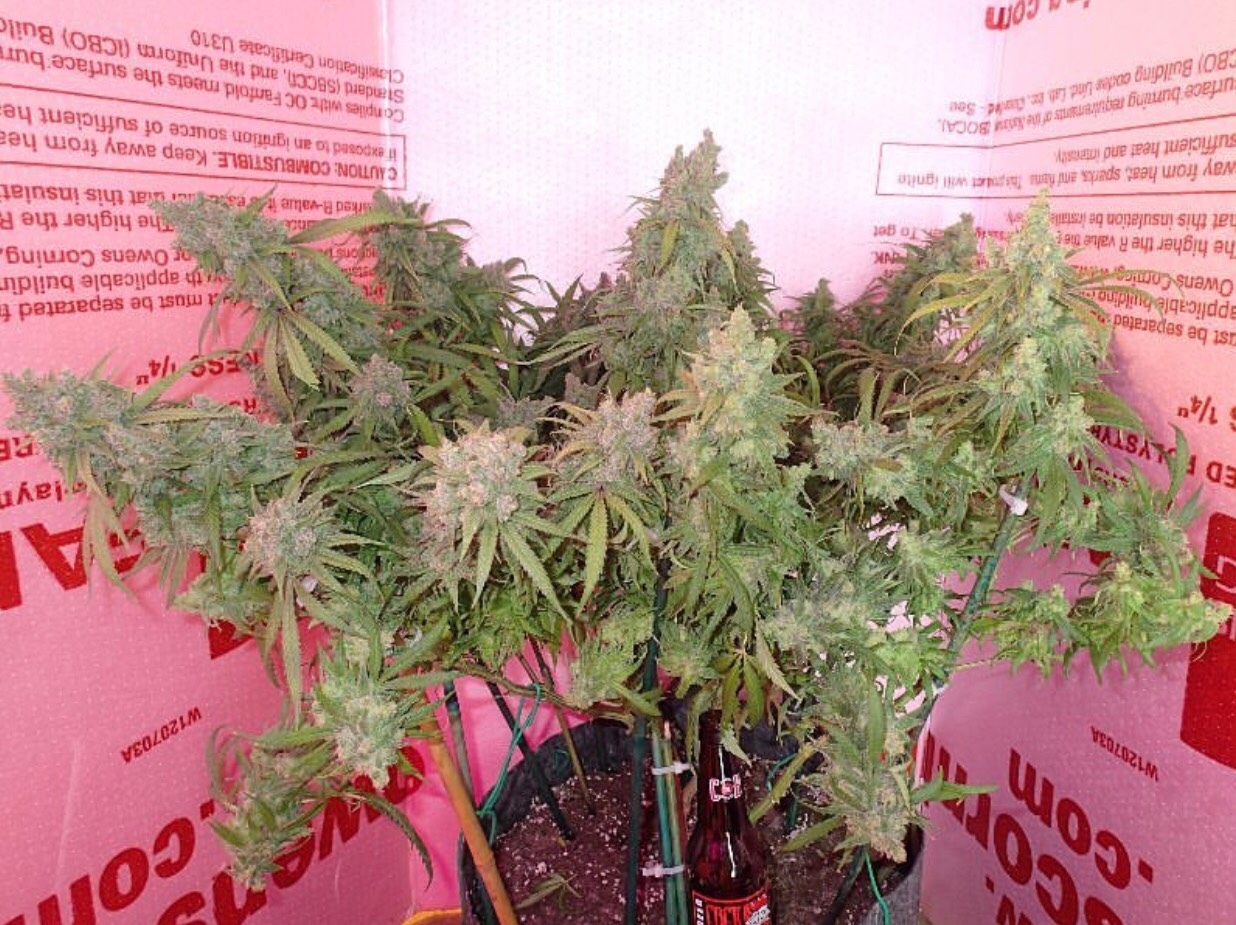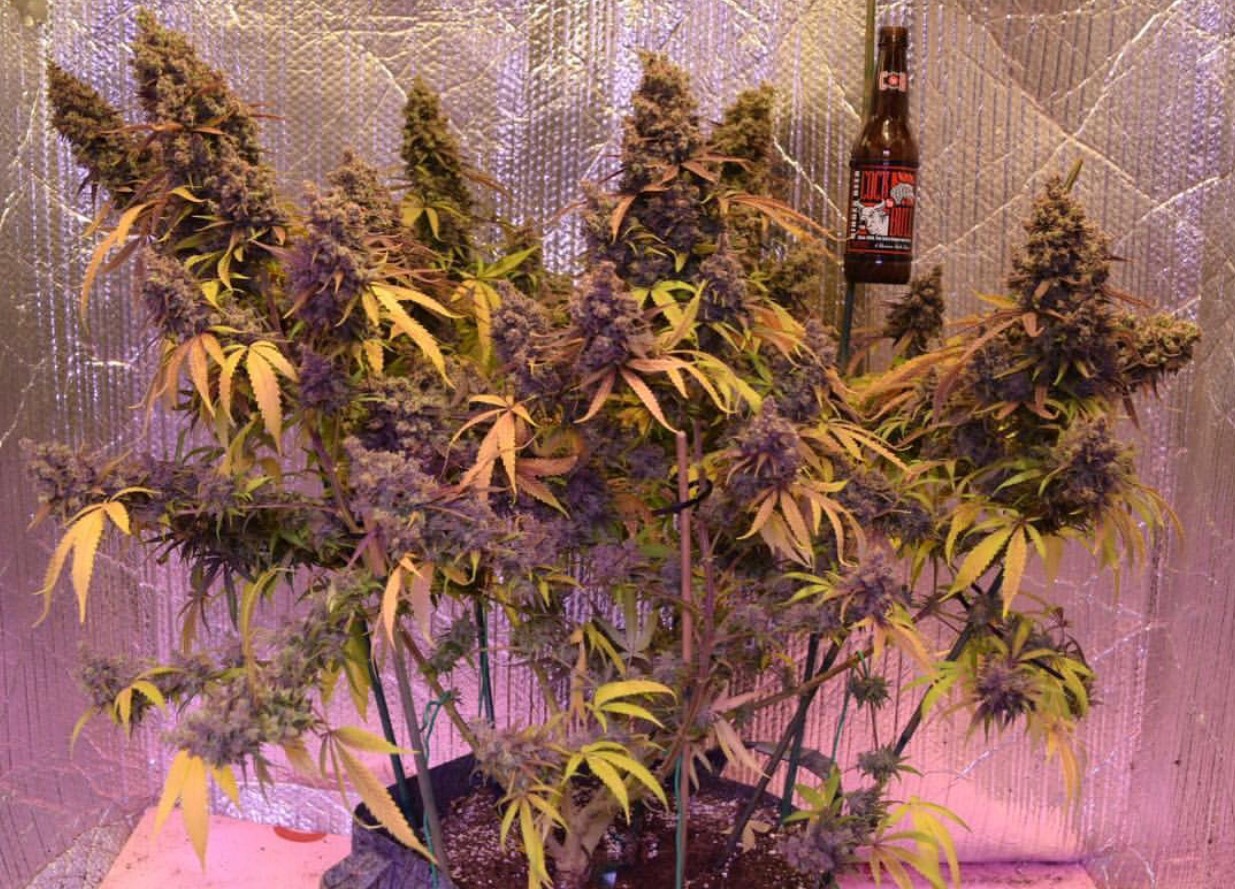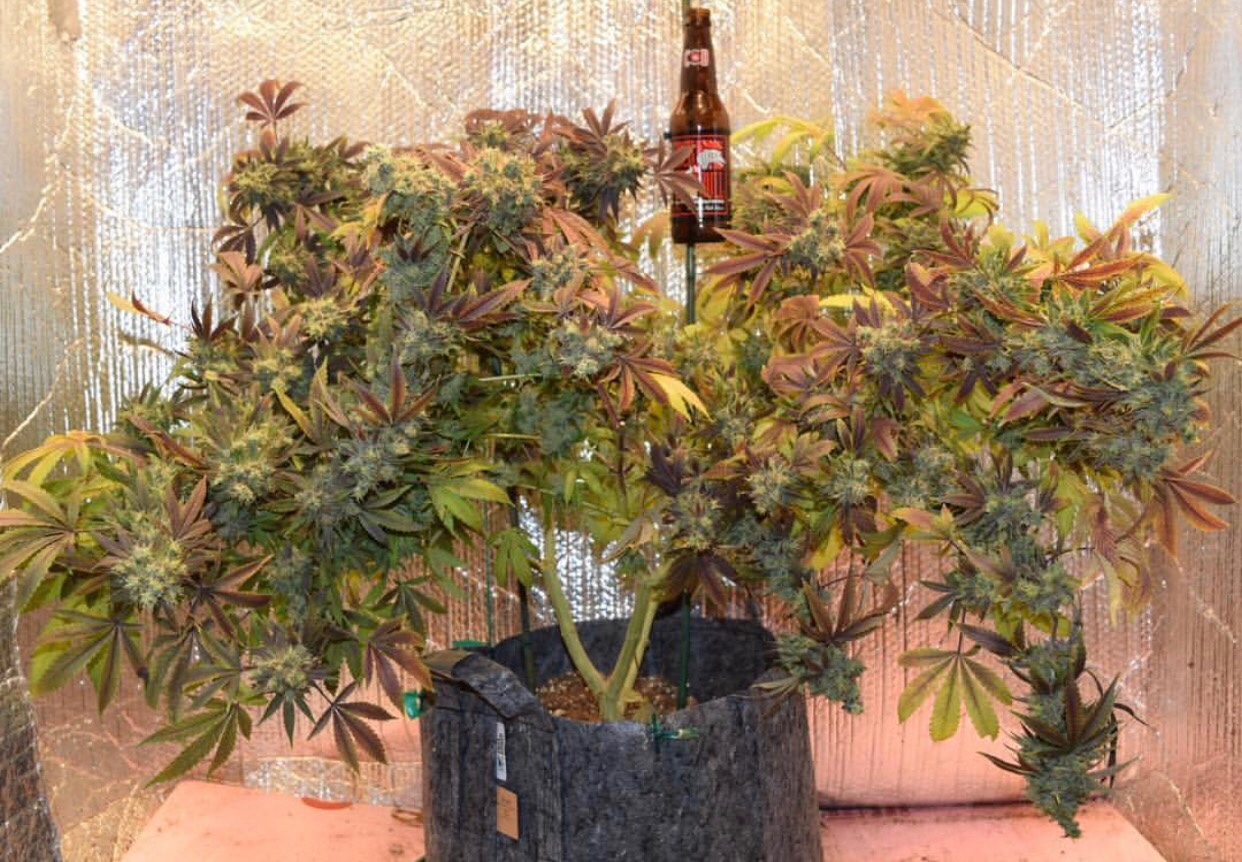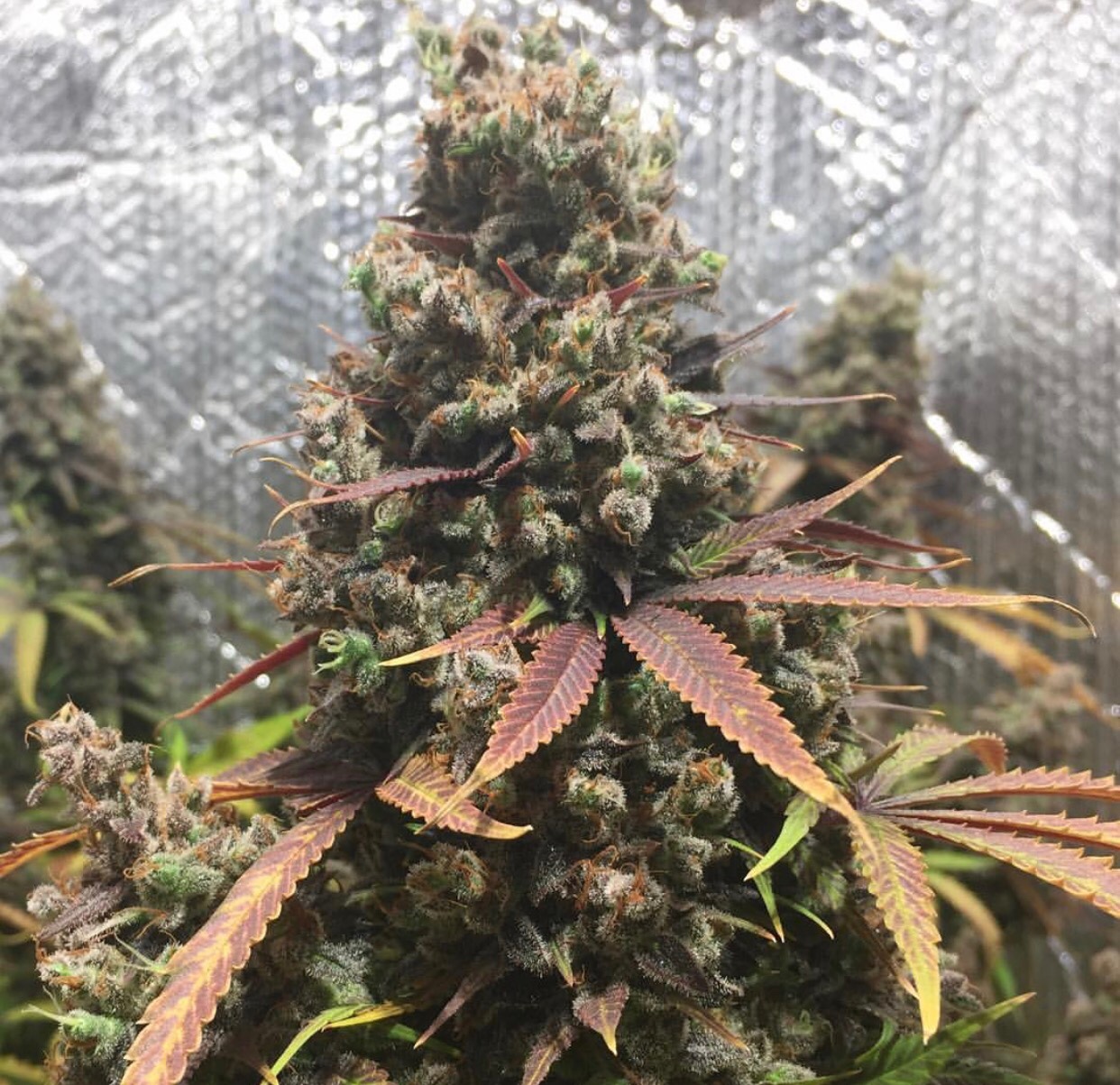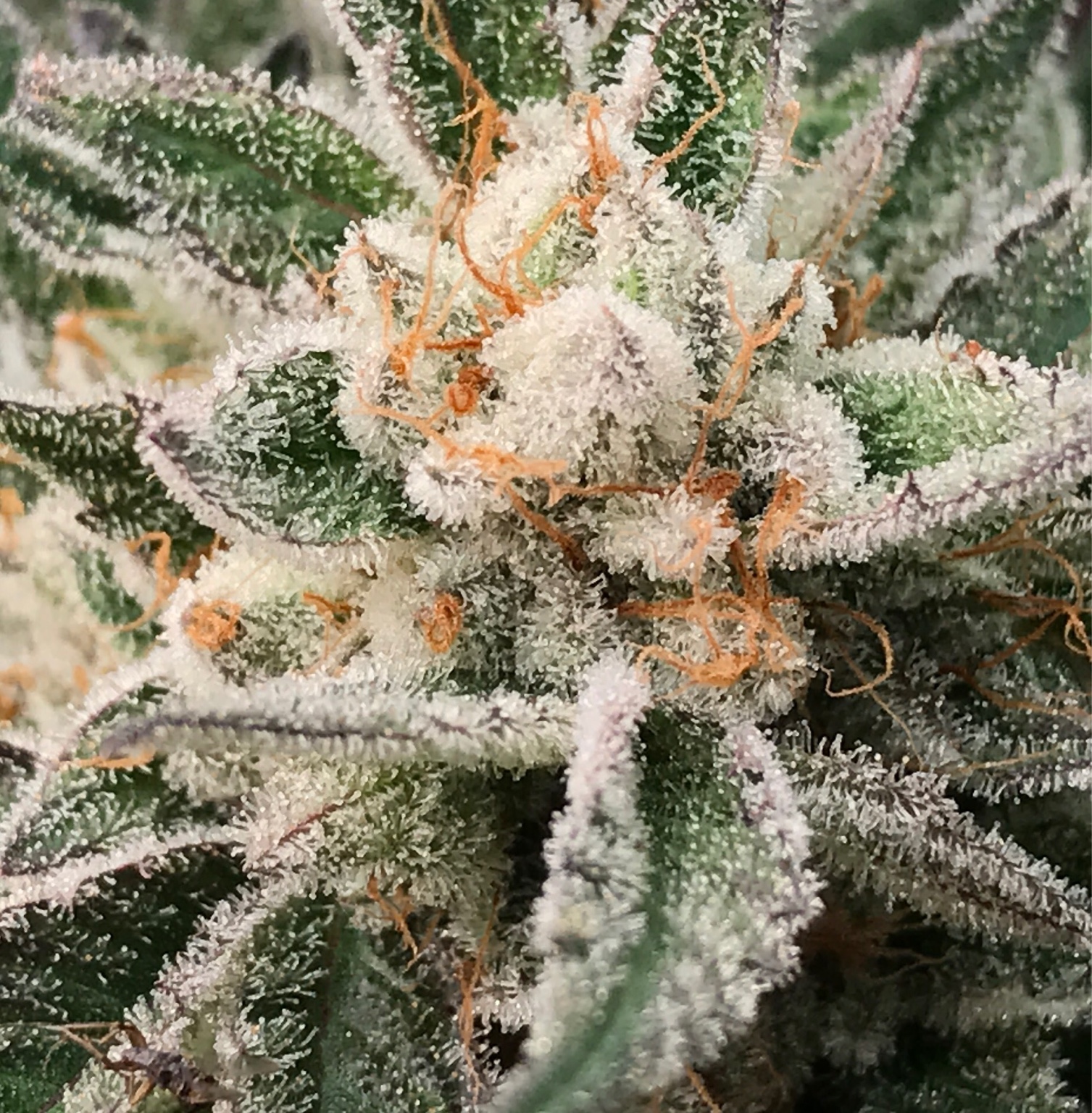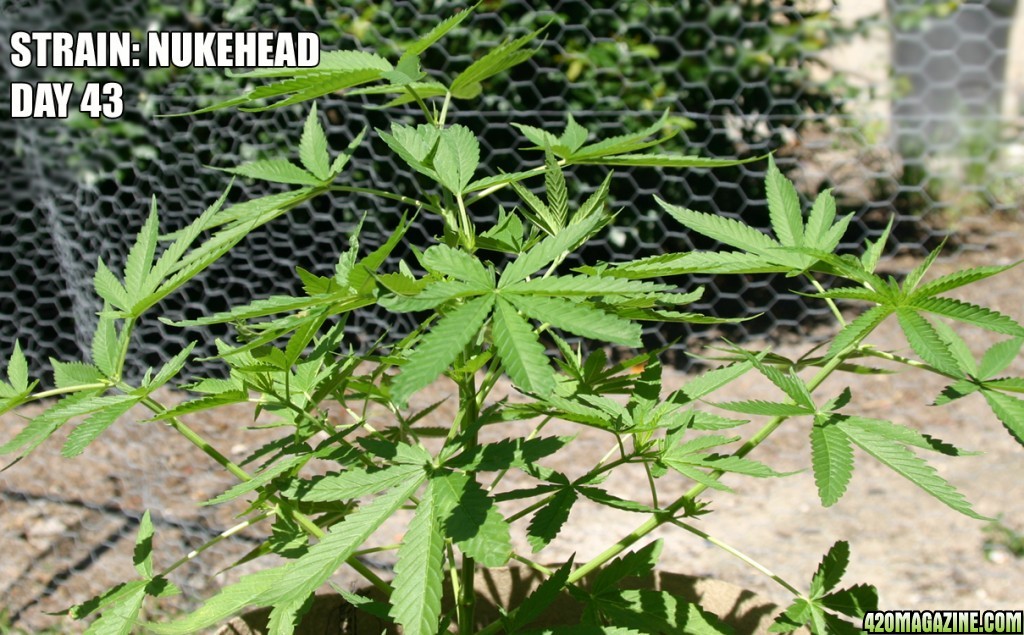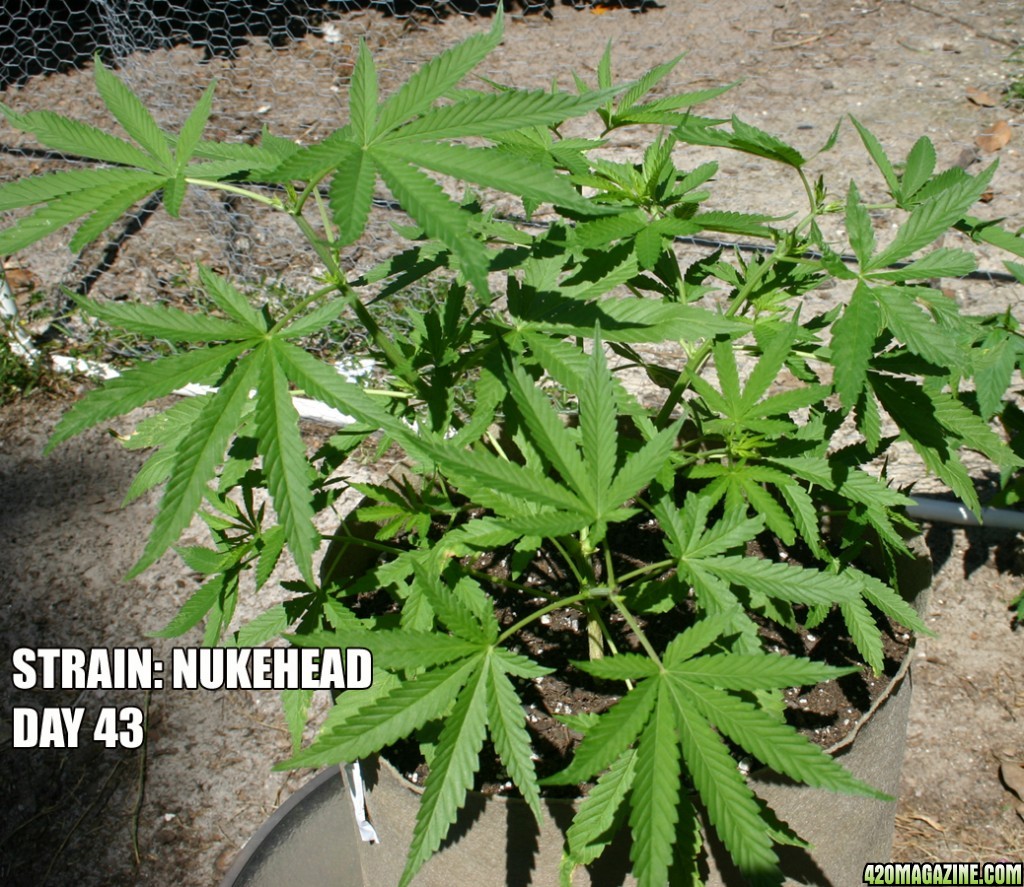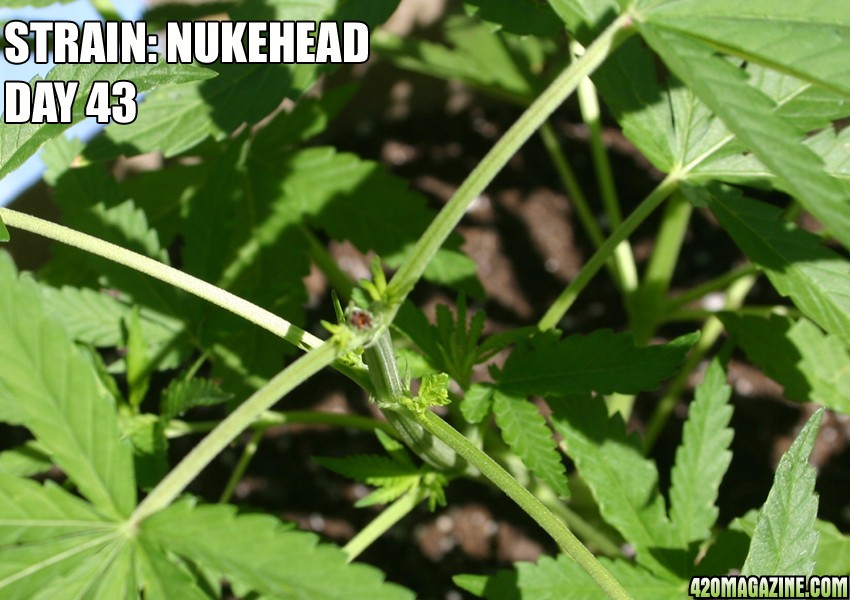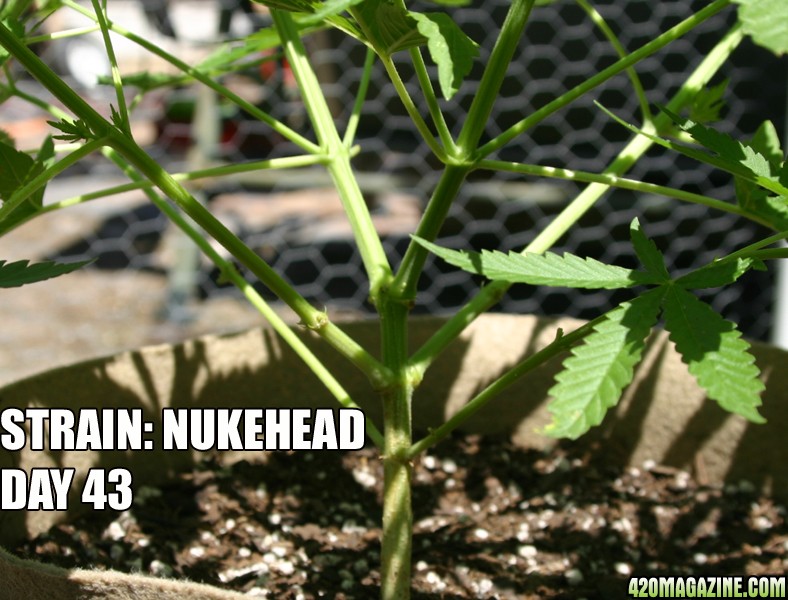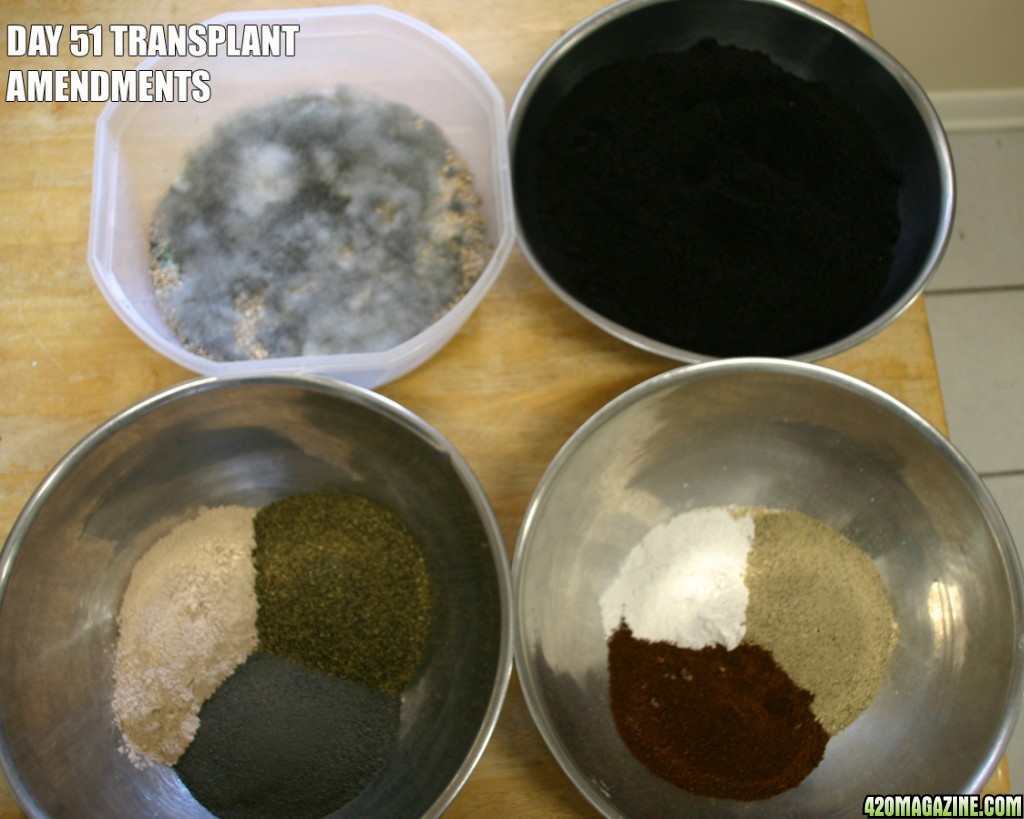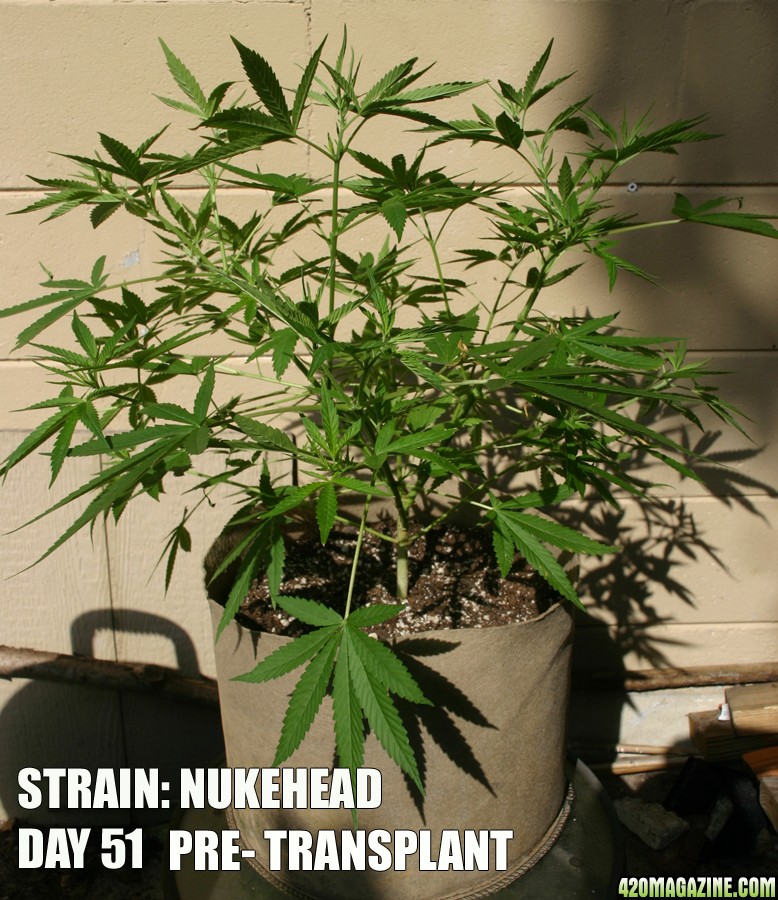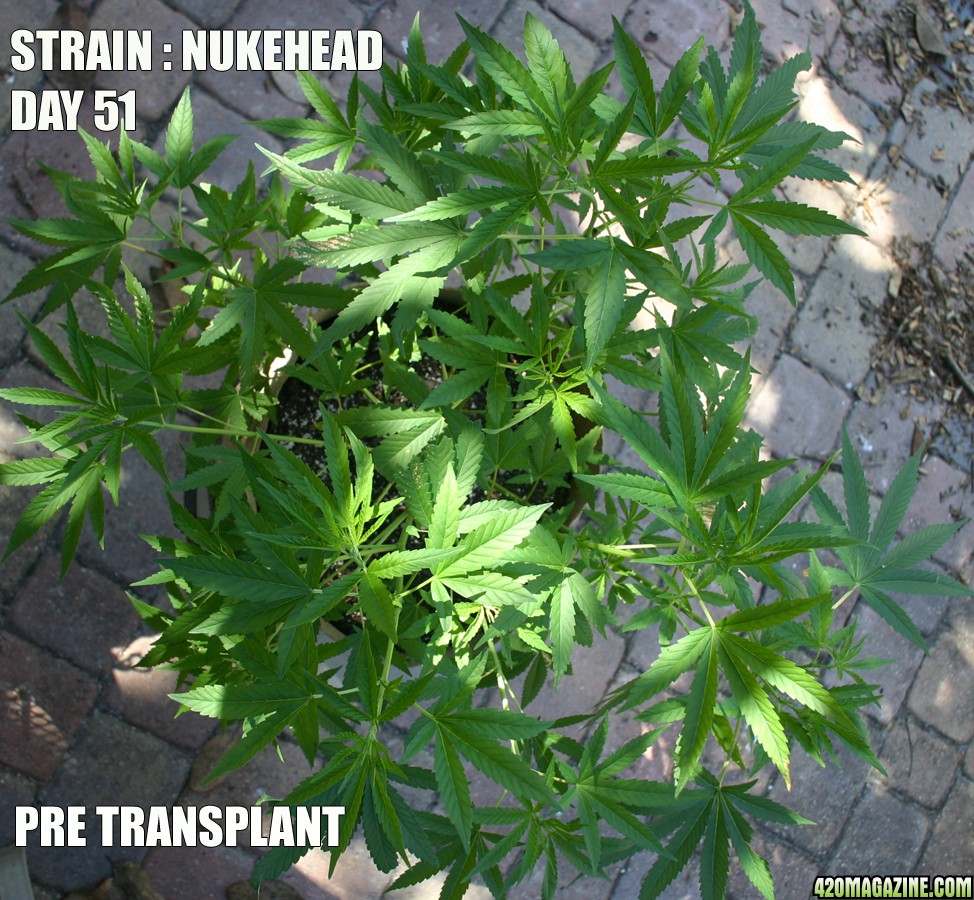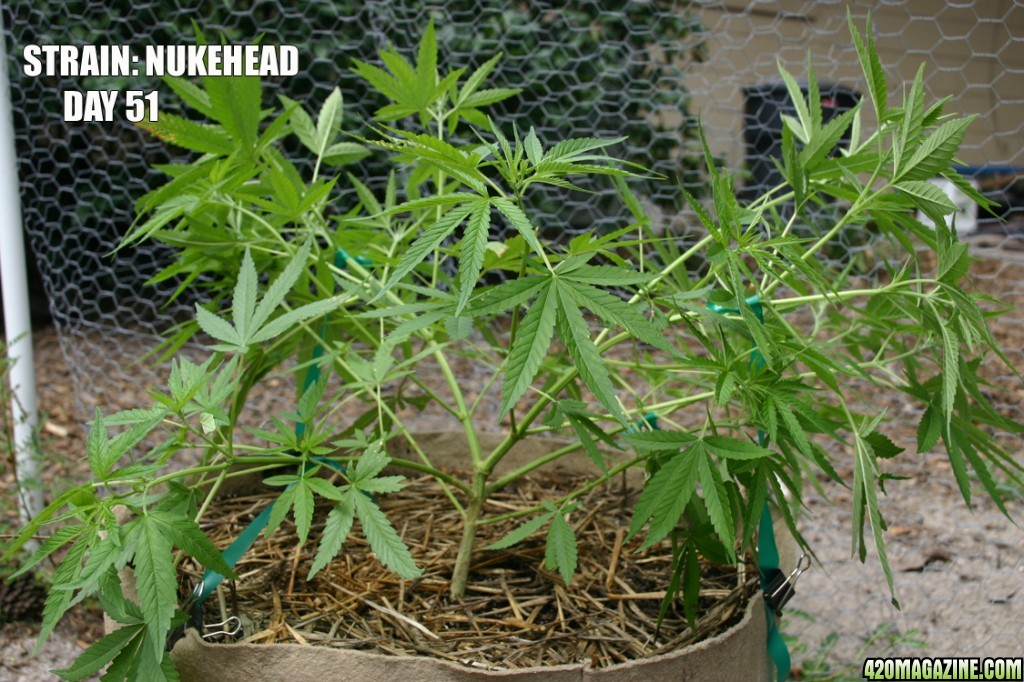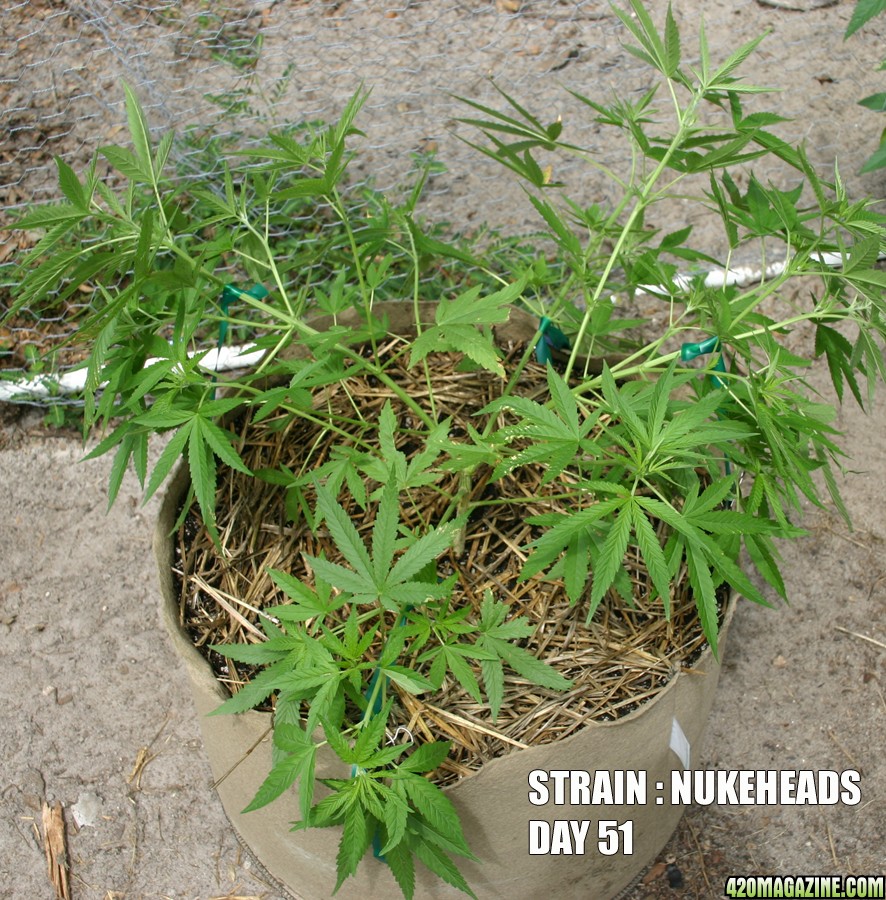Date: 8 September 2017
Strain: Nukehead
Type: Hybrid
Stage: VEG Day 51
Style: Outdoor
Media: BULLITS SOIL MIX
Current Pot: 5 Gal fabric to 15 gal fabric pot
Nutrients: Organic grow
Happy Hurricane 420 readers. Send me some more of that “Good Mojo” so Irma the Hurricane stays away from Rancho de Bullitt. This post is going to cover a lot of ground so let’s get to it. On Sept 8th, I transplanted into a 15 gal fabric pot and applied some LST techniques. This will be this plants final home. In doing so, I mixed 10 + or - gallons of my primary gardening mix for this transplant. I’m going to lay out my soil mix & the WHY’s of what I put into it.
The base of my garden soil is the compost I build myself. This batch is well aged. I have been saving about 6 gals for this transplant. It is composed of Ash, Alder, Red Oak, Mahogany, and Cherry hardwood sawdust that I get from a local mill shop. White Oak, Live Oak and Magnolia leaves. Mucho spent Coffee grounds some grass clippings and amendments kelp meal, alfalfa meal, baked then powdered banana peels, shrimp shells and egg shells, langbeinite, greensand, rock phosphate, leonardite, and basalt all in very small amounts. This mix produces a beautiful dark brown rich humus that smells like The Sherwood Forest and is loaded with nutrients. This compost comprises 50% of my mix.
Worm castings I produce myself, make up the next 20% of the mix. There is something crazy special about what happens in the digestive tract of an earth worm. Worm poop is proven to contain more nutrients coming out than the food consumed by the worms to begin with. How does that phreakin work? Worm castings are the most effective compost available. In fact, comparative research done at Cornell revealed that worm manure was around twenty times more potent than composted cow manure. Part of this enhanced performance is linked to the inoculum contained in the stuff. The microorganisms incubated in the worm’s tummy are unique to worms and they offer an invaluable contribution to any soil. Worm castings are the Cadillac of compost.
Mixed into these base composts I blend cleaned coco coir. Many cannabis growers use coco but do they know why? Coco holds up to 10 times its weight in water. It releases nutrients over an extended period of time, it significantly reduces the chances of root diseases, creates excellent air space which provides for excellent drainage and root development. Lastly coco carries a neutral to slightly acidic pH which cannabis simply loves. Coco makes up 15% of the mix.
Volcanic Pumice makes up 10% of the mix. The porous nature of pumice provides a home for soil microbiology, it allows it to hold vital nutrients in the microscopic surface pores, which helps regulate plant feedings. It increases aeration and drainage, increases water retention which in turn reduces crusting, cracking, and soil shrink because pumice will not compact or become soggy. It also holds its place within the soil structure unlike perlite which often floats to the surface. Pumice also carries a neutral pH.
The remaining 5% of my mix is comprised of amendments and rock dusts. Here we go.
Kelp meal brings a multitude of nutrients plus it contains growth hormones auxins, gibberellins, and cytokinins which are readily taken up by plants and put directly to use. Kelp stimulates soil bacteria while increasing soil structure, aeration, and moisture retention. Kelp fosters more extensive root systems, and provides a greater resistance to pests.
Langbeinite contains three essential nutrients; potassium, magnesium and sulphur. It is water soluble but the release of the minerals occurs slowly.
Greensand is actually rock that is mined from the ocean floor and ground into sand. Greensand contains potassium, iron, magnesium, calcium and phosphorus plus as many as 30 other trace minerals. It can absorb 10 times more moisture than sand which makes it an exceptional soil conditioner.
Leonardite brings humic and fluvic acid. This acts as a chelator in soil. Chelators hold mineral ions to prevent them from reacting in your soil and keeps them available to your plants.
Neem Cake brings high amount of plant-based N-P-K. Neem has also been to shown to contain a generous number of micronutrients and trace elements to address any plant nutrient deficiencies. The best part is that it provides it all in a slow-release form. Additionally, Neem cake contains a limonoid known as Azadirachtin. Azadirachtin is absorbed by the plant and becomes systemic throughout the plant. It serves as an anti-feedant, pest repellent, insecticide, nematicide and pest growth disruptor. Miraculously however, it does not inhibit any of the ‘good guys’ in soil microbiology. I could write a book about the benefits of mixing in Neem Cake. If you want to learn more go to Google Scholar.
Home grown Mycorrhizae. It’s so easy to grow - which is why I included the pics. Two pounds of worm castings mixed with a small amount of existing mycorrhizae from my the garden, topped with a sprinkle of ½ cup of powdered malted barley and spray with filtered water. Put a towel over it & put it in a very warm place, like the garage right now.
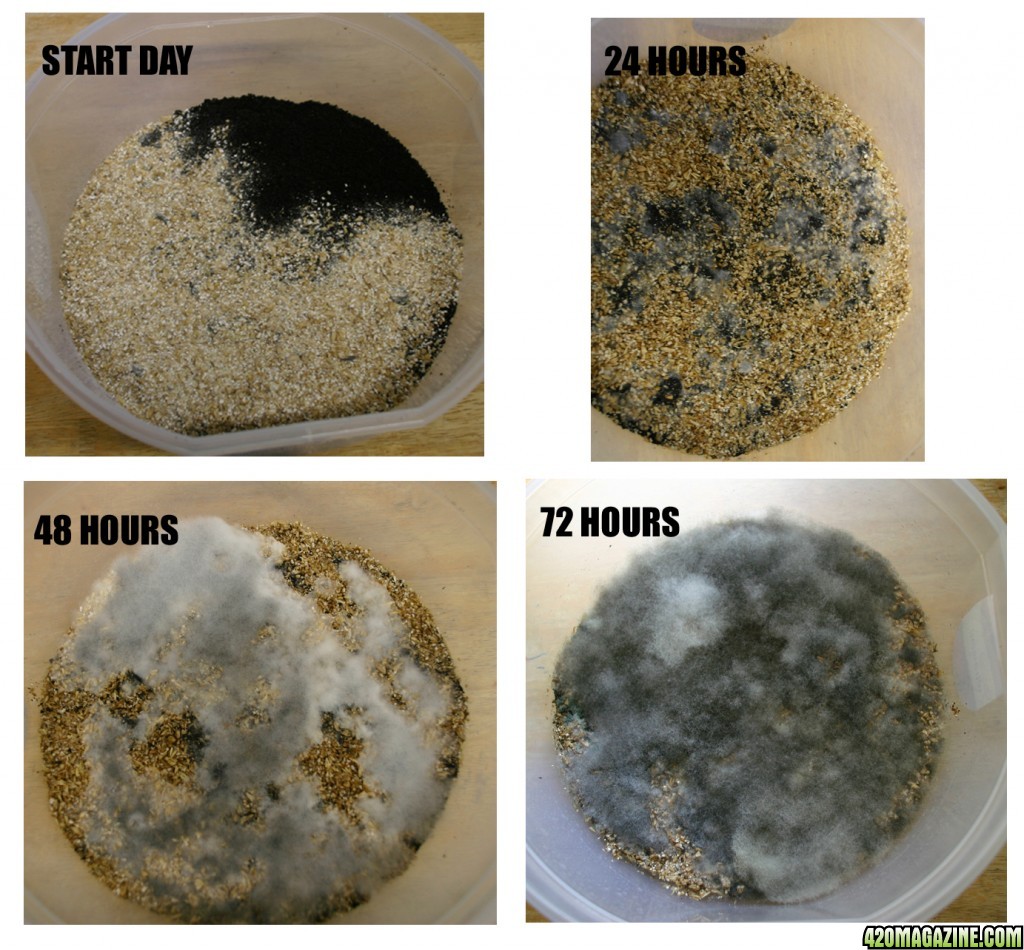
Mycorrhizae is ridiculously beneficial. It provides up to 1,000 times better absorption of nutrients needed for plant growth and health, it’s non-toxic, biodegradable, and provides a “secondary root system” that supplies extra water and nutrients. It increases plant establishment and improves absorption of nutrients in both acid or alkaline soils. It increases water uptake and holding capacity which improves drought tolerance and decreases drought stress. It improves resistance to insect pressure. Healthy plants have long been known to survive attacks with greater ease when mycorrhizae is dominant in the rhizosphere. It improves resistance to soil pathogens. Friendly Fungi (Trichoderma) naturally out-compete soil-borne fungal diseases and friendly Fungi trap harmful nematodes. It eliminates or reduces the need for chemical fertilizers which saves money. It eliminates dangerous pesticides, improves survival rates in pots and planters, improves transplanting rates and decreases transplant shock. It increases productivity and yield at harvest. It produces healthier, safer flowers due to improved mineral uptake. It improves soil structure and reduces soil compaction by increasing friability, aggregation, flocculation and porosity.
Ground 2 row Malted Barley provides amylase, arylsulphatase, β-glucosidase, cellulase, chitinase, dehydrogenase, phosphatase, protease and urease. These are all enzymes. Enzymes are the vital activators in life processes. In soil, they are known to play a substantial role in maintaining soil health. Enzymatic activity in soil is mainly of microbial origin, being derived from intracellular, cell-associated or free enzymes. A unique balance enzyme activities and components contribute to maintaining soil health.
Rocks Dusts
Let’s start with my favorite,
Basalt. It is comprised of 53% silica, it provides an excellent source of macro and micro nutrients, it increases the moisture holding properties of soil, it greatly enhances cation exchange capacity, and it improves soil structure and drainage. That data alone is fantastic! Note however, these points are accurate of most of the rock dusts I use. It’s the Paramagnetic activity that separates Basalt.
Dr. Phil Callahan identified paramagnetism as the reason that volcanic soils always outperform non-volcanic soils. Basalt is almost always present in volcanic soils. Basalt attracts, stores and converts atmospheric energy known as Extra Long Frequency (ELF) radio waves created from lightning into tiny light particles called photons. Photons released from Basalt effectively deliver a light source to the roots and the living rhizosphere. In his book,
Paramagnetism: Rediscovering Nature's Secret Force of Growth, Dr. Callahan cites an experiment he conducted with German Professor Dr. Fritz Popp, who is a leading researcher in light energy. They tested Basalt from Oregon for its paramagnetic conductivity. To their amazement, their sample had a reading of 4000 photon units released per minute over the test period. This demonstrated that Basalt alone was steadily releasing photon particles.
Additional testing, that involved a combination of the same Basalt worked into compost, revealed an increase in the photon reading by 100X to 400,000 units! Further lab testing shows paramagnetic stimulation can triple the activity of beneficial microbes. This lab testing provides clear evidence that there is a proven synergy between soil and paramagnetic Basalt. You will tremendously increase the overall efficacy of your soil with the simple addition of Basalt. If I had only one dust to pick, its Basalt.
Glacial rock dust is made from a wide variety of rocks which contain a broad spectrum of trace minerals that are collected and pulverized by, You guessed it, Glaciers. What is special to note about glacial dust is that it increases the availability of phosphorus to your plants.
Limestone. There are two types of limestone, Ag or garden Lime and Gypsum. So, what’s the difference? It’s the chemical structure. Ag lime is composed of the remains of ancient sea life that incorporated calcium into their shells and in many cases are surprisingly pure in calcium content, (96% CaCO3). It also contains a small but measurable amount, about 0.5% of magnesium. Gypsum is a sedimentary stone that is also the result of ancient sea life. The difference is this sea life thrived in sulfuric water conditions. Gypsum contains 22% Ca and 17% Sulphur which is an important factor in brix levels and flavor profiles.
Rock Phosphate No brainer, Right? It’s the P in N P K. It provides steady release of phosphorus and calcium containing 16% and 20% respectively along with 1% Iron and 0.1% Zinc. It encourages flower production, facilitates mobility of other nutrients within plant, and stimulates root growth.
Olivine is another type of volcanic rock. Like Basalt, it is mafic, meaning that the dust is high in magnesium and iron. The difference however, unlike basalt, which is 2-3% magnesium, olivine will have upwards of 50% magnesium. I use this sparingly and for the sole purpose of adding magnesium to my soil. The magnesium, along with the other trace elements releases slowly and does not easily leach away from Olivine which means it stays available to your soil microbiology throughout your grow.
Azomite was formed when volcanic ash merged with sea water millions of years ago. This mixture of volcanic ash and sea water created a unique source of 70+ trace minerals and elements. Azomite has been proven to enhance pest and disease resistance in plants, improve root systems, increase plant vigor, and best of all increase yields.
Now, if you read this whole post, does anyone still think its
“impossible” to provide the plant with the nutes it needs when it needs it? So, you think I’m going to crush it at harvest time or what? I already know, with my mix, I am guaranteed to improved plant structure, increased resistance to pests and disease, and above all, produce more flowers with increased intense terpene profiles and resin production.
At the end of the line I’ll have purely organic meds and I will not have added to the coffers of the industrial poison complex. Win – Win I say. From here on until harvest I’ll be feeding water and bloom centric teas. That’s it. Mother Nature’s bacteria, fungi, nematodes, protozoa, arthropods and earthworms. will do all the heavy lifting.
Enjoy the rest of my poor photography. Comments and questions are appreciated! Thank you for any input and for following this journal.
Love ~ Light ~ Peace All

